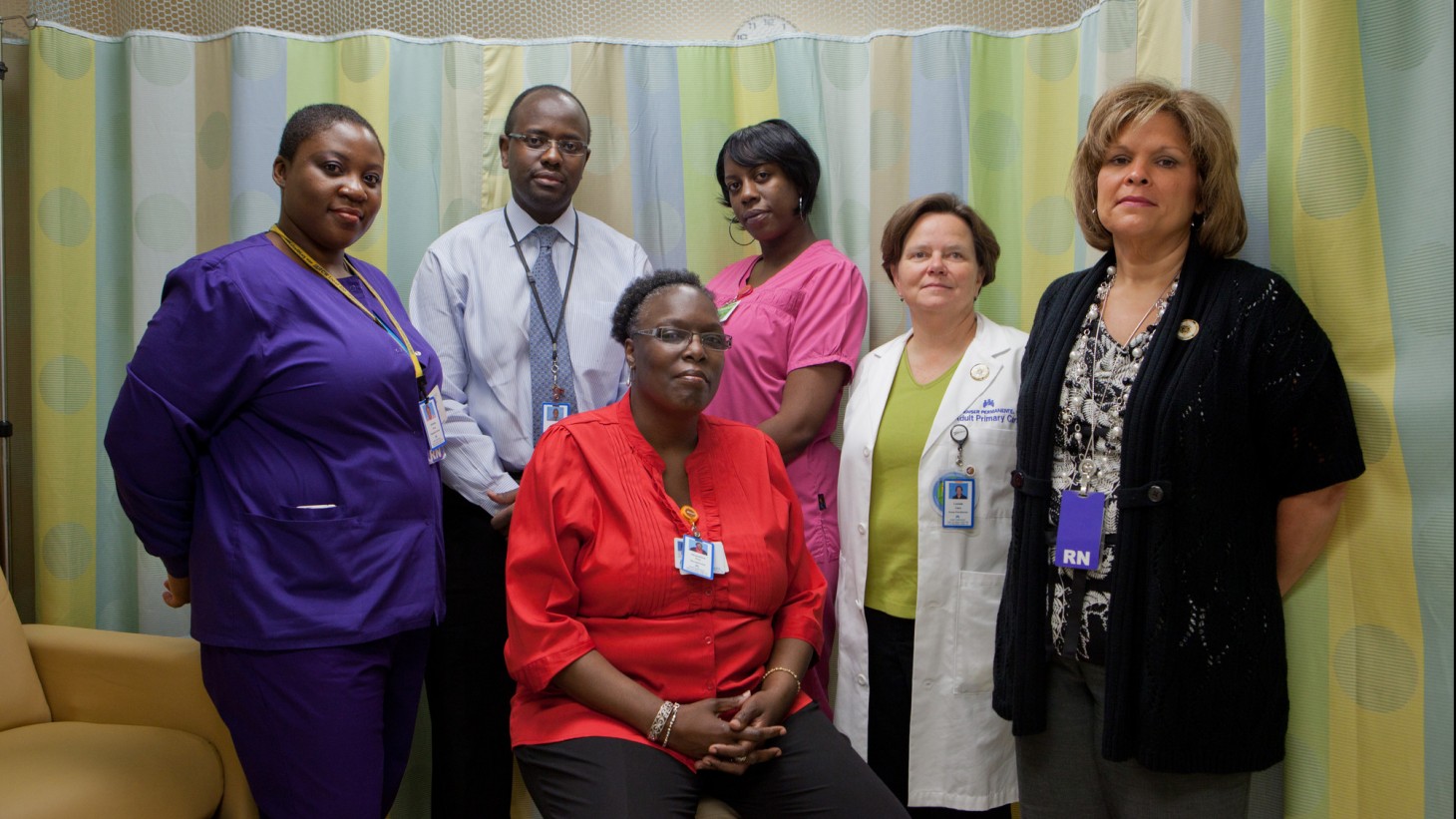A Quicker and Safer Trip, Door to Door
Transforming Transport

Some of the Capitol Hill Adult Medicine team: Johnyia King, lead nurse; Sos Miboijana, MD; Jaqueline Cox, receptionist; Nikki Davis, LPN; labor co-lead Louise Casa, a nurse practitioner; and former management co-lead Shirley Moreland, clinical operations manager. King, Davis and Casa are UFCW Local 400 members, and Cox is an OPEIU Local 2 member.
Capitol Hill cuts length of wheelchair trips by more than half
Department: Adult Medicine, Capitol Hill Medical Center (Mid-Atlantic States)
Value Compass: Service
Problem: Some individual patient transport trips were taking an hour or more, inconveniencing patients and impacting the unit's smooth operation. Staff members sometimes had to wait for a patient to receive medications or had to return to the unit to retrieve a wheelchair adequate for the height and weight of the patient.
SMART goal: Reduce staff time spent transporting a patient by wheelchair from the unit to the lab, pharmacy, hospital entrance or public transit stop from an average of 30 minutes to 15 minutes between May and September 2012.
Union co-lead: Louise Casa, nurse practitioner, UFCW Local 400
Management co-lead: Jacqueline Marshall, RN, clinical operations manager for Adult Medicine
Small tests of change:
- A trained, dedicated transporter position
- New, wider wheelchairs
- Coordinating transport times with other departments
- Lab and pharmacy patient priority cards
Results: Reduced staff time to transport patients from an average of more than 30 minutes to 10 minutes.
Biggest challenges
A brisk walk by an able-bodied person from the unit to the train station takes about 15 minutes roundtrip—but struggling with an infirm patient in an outdated or inappropriately sized wheelchair could easily double that time.
Other issues included patient dissatisfaction, staff injuries and the added risk of patient treatment delays or falls, says labor co-lead Casa, noting that “we had to look at the problem from many angles.”
Background
The Capitol Hill Medical Center opened with great fanfare in 2011. Hailed as a beacon for affordable and accessible care just as the national debate heated up on these issues, the center attracted attention—and many new members. One key factor that made the new facility so attractive—its proximity to a major public transit station in the District of Columbia—also turned into a potential Achilles heel.
That was until the Adult Medicine UBT rolled in with the right solutions.
The Adult Medicine team started by using performance improvement charting tools to log the time each staff member took to transport a patient to and from the Union Station subway stop or to ancillary departments within the medical center.
The team discovered many of the elderly or wheelchair-using members struggled to make the long trek from the exit doors of Union Station to the waiting room of the Adult Medicine unit, a medical center starting point for most patients.
The team lobbied for new wheelchairs—and for a new transporter position, an OPEIU Local 2 member who transports many of the patients and coordinates the trips that staff members make to the other departments.
In addition, the team now calls ahead to the lab or pharmacy to ensure tests and medications will be ready, or nearly so, when the patient is brought in. It also gives patients red cards to signal their priority status to lab and pharmacy staff.
